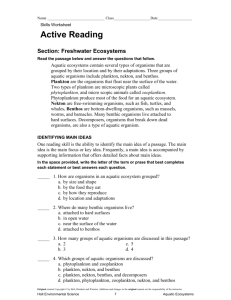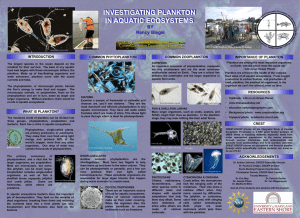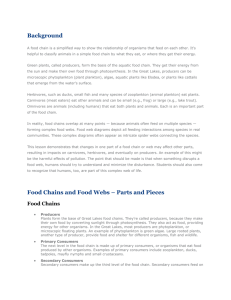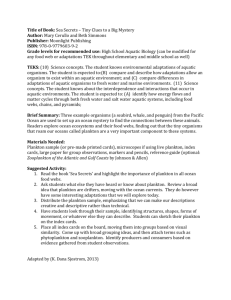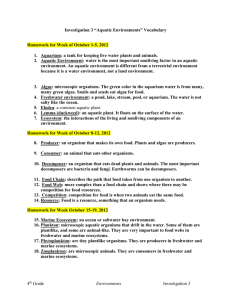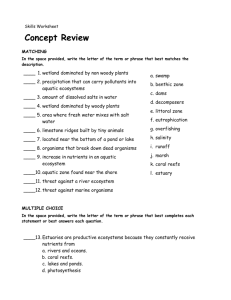01 - Cloudfront.net
advertisement
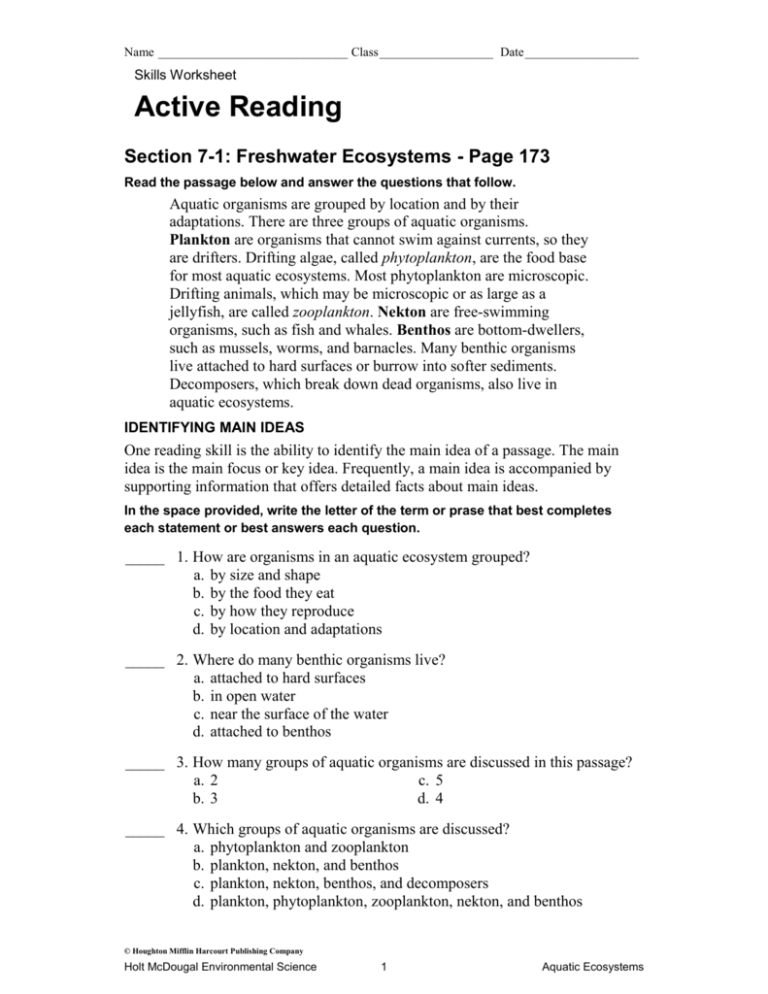
Name ______________________________ Class __________________ Date __________________ Skills Worksheet Active Reading Section 7-1: Freshwater Ecosystems - Page 173 Read the passage below and answer the questions that follow. Aquatic organisms are grouped by location and by their adaptations. There are three groups of aquatic organisms. Plankton are organisms that cannot swim against currents, so they are drifters. Drifting algae, called phytoplankton, are the food base for most aquatic ecosystems. Most phytoplankton are microscopic. Drifting animals, which may be microscopic or as large as a jellyfish, are called zooplankton. Nekton are free-swimming organisms, such as fish and whales. Benthos are bottom-dwellers, such as mussels, worms, and barnacles. Many benthic organisms live attached to hard surfaces or burrow into softer sediments. Decomposers, which break down dead organisms, also live in aquatic ecosystems. IDENTIFYING MAIN IDEAS One reading skill is the ability to identify the main idea of a passage. The main idea is the main focus or key idea. Frequently, a main idea is accompanied by supporting information that offers detailed facts about main ideas. In the space provided, write the letter of the term or prase that best completes each statement or best answers each question. _____ 1. How are organisms in an aquatic ecosystem grouped? a. by size and shape b. by the food they eat c. by how they reproduce d. by location and adaptations _____ 2. Where do many benthic organisms live? a. attached to hard surfaces b. in open water c. near the surface of the water d. attached to benthos _____ 3. How many groups of aquatic organisms are discussed in this passage? a. 2 c. 5 b. 3 d. 4 _____ 4. Which groups of aquatic organisms are discussed? a. phytoplankton and zooplankton b. plankton, nekton, and benthos c. plankton, nekton, benthos, and decomposers d. plankton, phytoplankton, zooplankton, nekton, and benthos © Houghton Mifflin Harcourt Publishing Company Holt McDougal Environmental Science 1 Aquatic Ecosystems Name ______________________________ Class __________________ Date __________________ Active Reading continued _____ 5. The food base of most aquatic ecosystems are a. worms. b. phytoplankton. c. zooplankton. d. fish. VOCABULARY DEVELOPMENT In the space provided, write the letter of the term that best matches the description. _____ 6. aquatic organisms that float near the surface of the water a. phytoplankton _____ 7. aquatic organisms that break down dead organisms b. plankton c. nekton _____ 8. drifting algae d. benthos _____ 9. drifting animals _____ 10. aquatic organisms that dwell at the bottom of the water e. decomposers f. zooplankton _____ 11. aquatic organisms that are freeswimming Write “P” on the line in front of each example of plankton, “N” on the line in front of each example of nekton, and “B” on the line in front of each example of benthos. _____ 12. turtles _____16. mussels _____ 13. worms _____17. barnacles _____ 14. zooplankton _____18. phytoplankton _____ 15. fish _____19. whales © Houghton Mifflin Harcourt Publishing Company Holt McDougal Environmental Science 2 Aquatic Ecosystems
